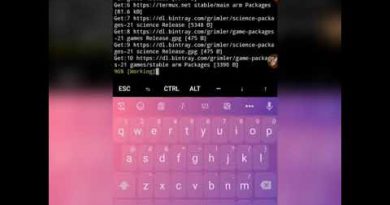Install & Configure OpenVPN Server on Windows
How to install and configure OpenVPN server on Windows 10
You and your co-workers often work remotely. You want to build a vpn server on Windows operating system. In this video, I will show you how to install OpenVPN server on Windows
———-
Commands https://docdro.id/QeQ1sHX
NETGEAR WiFi 6 Router https://amzn.to/3Ov8X3S
TP-Link WiFi 6 Router https://amzn.to/3QjafAt
———-
Please HELP ME 10K subscribers
#bth #openvpn #windows10
windows server




On 4:24 is the ip addres mean ip public in my own pc?
Thanks for the video. All steps covered precisely. Can you show us how we can established a site to site connectivity using OpenVPN?
For example : We should be able to connect to the above server from an office with multiple users without the need of using a client.
USEFUL CONTENT
Why the hell is this tutorial more up to date than the official wiki?
Most of the wiki still shows how to set it up with easyRSA2 instead of easyRSA3 which are completely different command wise
openssl.exe 응용프로그램을 제대로 시작하지 못했습니다(0xc015002). 라고 해서 재배포 패키지도 깔아도 ./easyrsa build-ca nopass에서 진행이 안됩니다.
can make totorial how make openvpn server with using socks5 ip ?
Open VPN builds multiple IPs, what should I do?
thanks. love your channel.
On 4:00, where did you get the "server" file?
06-05-23 – Great!!!
It wouldn't have hurt if you would have shown a set-up in conjunction with a router that has a built-in OpenVPN server and necessarily a built-in Dyn DNS(like Asus routers have), which would've meant to connect remotely either from a laptop or Android to your own residential IP, rather then connect with a foreign VPN. There are sometimes when you really need to connect to your own country and that example would've been very helpful!
Amazing content, very precise instructions
Thanks for the vid, but sadly did not work out. I ran the server but not even the port it was supposed to work on was listening. Dont know how or where I messed up, but I had to give up. Maybe I'll try on linux next time. Too bad there are not even troubleshooting steps available, logs didn't mention any critical error, service was running.
1. I followed all the steps all the way but when I get to the client files part, I'm confused because the 4 server files should still be in your config folder (mine are) but yours aren't.
2. OpenVPN was already installed in the system as per your video, and this was evident in the OpenVPN shortcut on your desktop. How then did you managed to get the same installer to launch and give you the option to Install or Customize, because with the programme already installed, the installer will only ask if you want to remove the programme. Did you uninstall openVPN first? If yes, wouldn't that remove all the configuration files? It is not very clear on the video.
Can you please advise?
I get error No server certificate verification method has been enabled
From where did you get the server text file in desktop?
You are absolutely Brilliant. With in 10 min. you explained all points for setting VPN. Thanks a lot.
¿Por favor de donde diablos sale la carpeta pki?
Where the heck does the pki folder come from please?
bin/sh: ./easyrsa/init-pki: not found
Thank you very much for the video, it was the most complete I found, but I have a doubt. As I can create more clients, I would like to be able to connect more than one client.
what if the computer running openvpn server is not the gateway? How can you get the openvpn clients to have access to the LAN that the openvpn server resides on? What routes need to be pushed?
How to create only Client profile ?
Hi , can I login from phone to this server?
I cant view your Command line Links? is it possible to put them in order cz when i got to creating the server folder I was missing two files I only had one security cert and the dh.pem from here I couldn't continue?
I keep getting 'connecting to management interface failed.' Any idea???
Both PC are connected to the vpn server but I stil can't use rdp on either of them
Where does the DHCP server reside?
I do want to add something to this. I followed your entire tutorial and it got me connected to the VPN, but my public IP wasn't changing. What fixed this is adding this:
1) Add this line to the server.ovpn file: push "redirect-gateway def1"
2) Going to Services and then making the "Routing and Remote Access" set to automatic start and then starting it.
3) Going to the Network Connections spot in Control Panel, right clicking on the main/active LAN port, properties, sharing tab, checking the "Allow other network users to connect….", setting the dropdown to the OpenVPN TAP adapter (or whatever you named it), unchecking the "Allow other network users to control…", clicking OK.
4) Setting IPEnableRouter to 1 in the registry under HKEY_LOCAL_MACHINESYSTEMCurrentControlSetServicesTcpipParameters
I did all of this and my mobile phone is able to connect now and shows my public IP.
Thanks for your video for putting me on the right path and I hope this is closing the loop.
Source of what worked for me: https://forums.openvpn.net/viewtopic.php?t=7343
DONT DO IT!!! BS